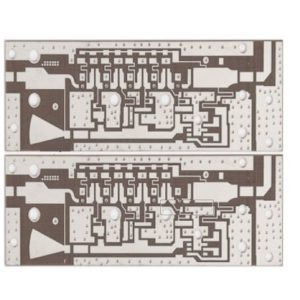In recent years, the market share of automotive millimeter-wave radar has been getting higher and higher, which pulls the production demand for radar PCB (pcb radar) is get bigger and bigger. Then what is radar PCB? Why is radar PCB popular among automotive manufacturers? Let's take a look at the following article.
1. Definition of radar
Radar, from the abbreviation of radio detection and ranging, means "radio detection and ranging", i.e. using radio methods to detect targets and determine their spatial position. For this reason, radar is also known as "radiolocation". Radar is an electronic device that uses electromagnetic waves to detect targets. A radar is an electronic device that uses electromagnetic waves to detect a target. Radar emits electromagnetic waves to illuminate a target and receives its echo, thus obtaining the distance from the target to the point of emission of electromagnetic waves, the rate of change of the distance (radial velocity), the bearing, and the position. (radial velocity), bearing, altitude, and other information.

2. The working principle of radar
Radar plays a similar role to the eyes and ears, at the same time, its information carrier is radio waves. Whether it is visible light or radio waves, in essence, is the same thing, are electromagnetic waves, the speed of propagation in a vacuum is the speed of light C, the difference is that their respective frequencies and wavelengths are different. The principle is that the transmitter of radar equipment through the antenna to the electromagnetic wave energy shot in a certain direction in space, in this direction of the object reflecting the electromagnetic wave encountered; the radar antenna receives the reflected wave, sent to the receiving equipment for processing, to extract some information about the object (the target object to the radar distance, the distance rate of change or radial velocity, orientation, height, etc.).
The principle of measuring distance is to measure the time difference between the transmitted pulse and the return pulse, and since electromagnetic waves travel at the speed of light, this can be converted into a precise distance between the radar and the target. The principle of measuring target orientation is to use the antenna's sharp azimuth beam, by measuring the elevation angle against the narrow elevation beam, so that the target altitude can be calculated based on the elevation angle and distance.
Measurement of speed principle is based on the radar itself and the target having relative motion between the frequency Doppler effect. The target echo frequency received by the radar is different from the radar transmission frequency, and the difference between the two is called the Doppler frequency. One of the main pieces of information that can be extracted from the Doppler frequency is the rate of change in the distance between the radar and the target. the rate of change of the distance between the radar and the target. When the target and the interfering clutter coexist in the same spatial resolution unit of the radar, the radar uses the difference in Doppler frequency between them to detect the target from the interfering clutter. The radar can use the difference in Doppler frequency between them to detect and track the target from the interfering clutter.
3. Application of radar
The advantage of radar is that it can detect long-distance targets during the day and night, it is not blocked by fog, clouds, and rain, and it has the characteristics of all-weather and all day. And has a certain penetrating ability. Therefore, it has not only become indispensable electronic equipment for the military but is also widely used in social and economic development (such as weather forecasting, resource exploration, environmental monitoring, etc.) and scientific research (celestial research, atmospheric physics, ionospheric structure research, etc.). Satellite- and airborne Synthetic Aperture Radar (SAR) has become a very important sensor in remote sensing today. Radars targeting the ground can detect the precise shape of the ground. Its spatial resolution can be from a few meters to tens of meters and is independent of distance. Radar has also been shown to be useful in flood monitoring, sea ice monitoring, soil moisture surveys, forest inventory, geological surveys, and so on. investigation, geological investigation, and other aspects also show good application potential.
In summary, the radar PCB carries the radar function to achieve the electronic motherboard, that is, the circuit board. Radar PCB application areas are very wide, which is mainly Based on the excellent performance of the radar. The traditional radar PCB applied in the car has the advantages of all-weather and low cost, but its limitation is that it can not realize the point cloud imaging and low precision. At present, automotive millimeter-wave radar has begun to apply 4D millimeter-wave radar technology. (pcb radar)
4D millimeter wave radar than traditional millimeter wave radar up a dimension can detect the object's 3D coordinate data, and video and laser, data fusion is very easy, fusion accuracy is also very low. 4D millimeter wave radar has one more longitudinal antenna and processor than traditional millimeter wave radar, which can detect data from different heights and different levels. 4D radar has an additional longitudinal antenna and processor than traditional millimeter wave radar and can detect moving and stationary objects at different heights and levels.
4. 4D radar function
-Circumferential millimeter wave radar sensing
-Environment modeling (Freespace)
-Automated parking (APS)
-Classification
-Localisation landmark-based SLAM.
Based on the advantages of millimetre wave radar, the demand for radar pcb production is also increasing, opcba.com can produce radar pcb (pcb radar), contact us for more information. Contact us for more information.

分享到: